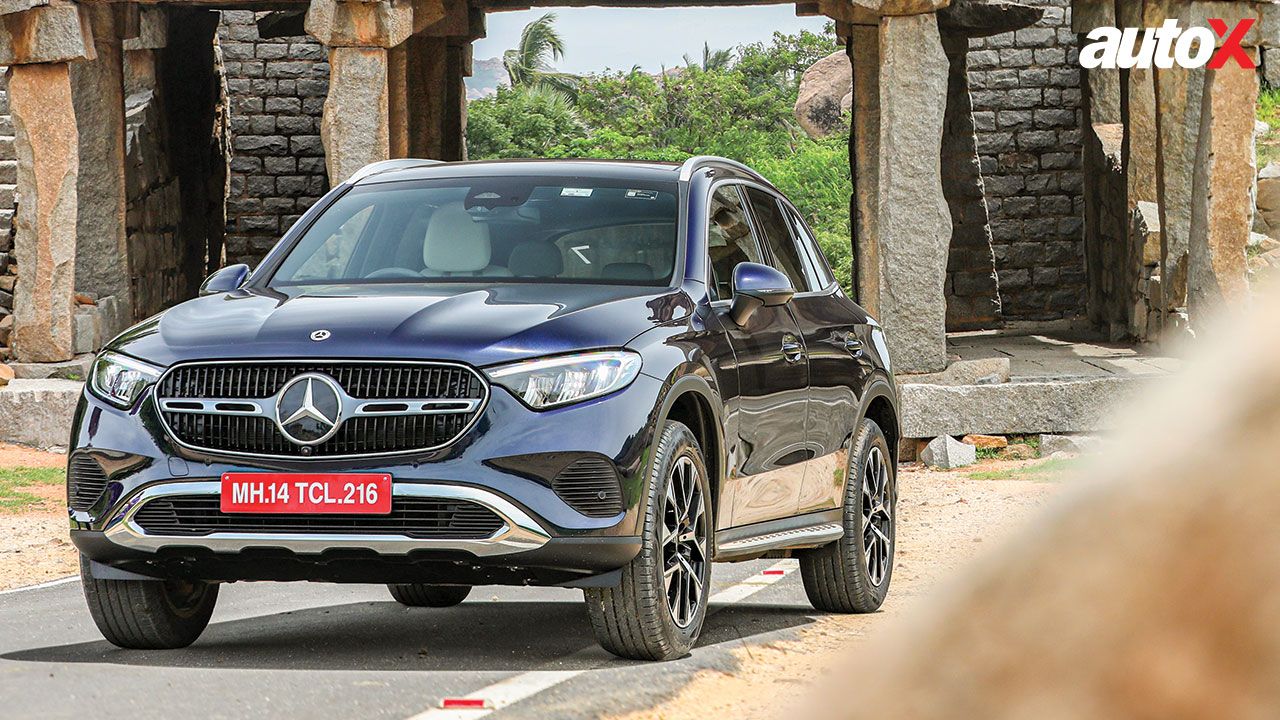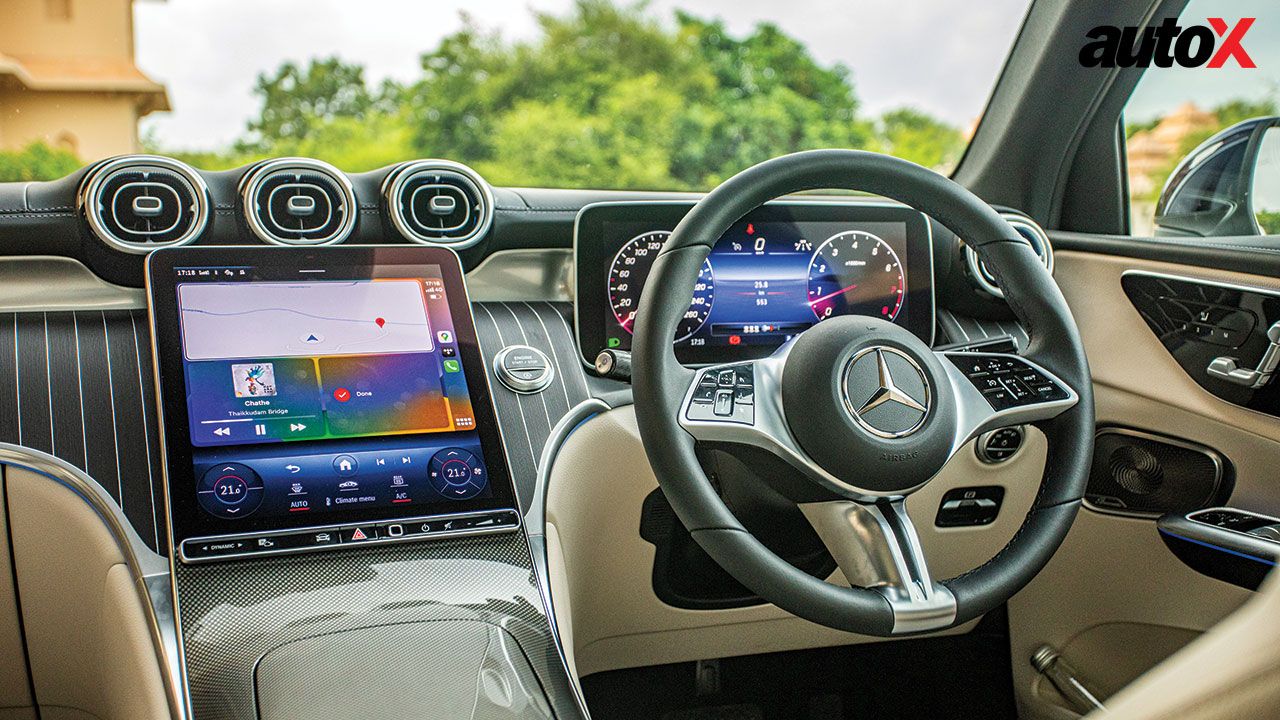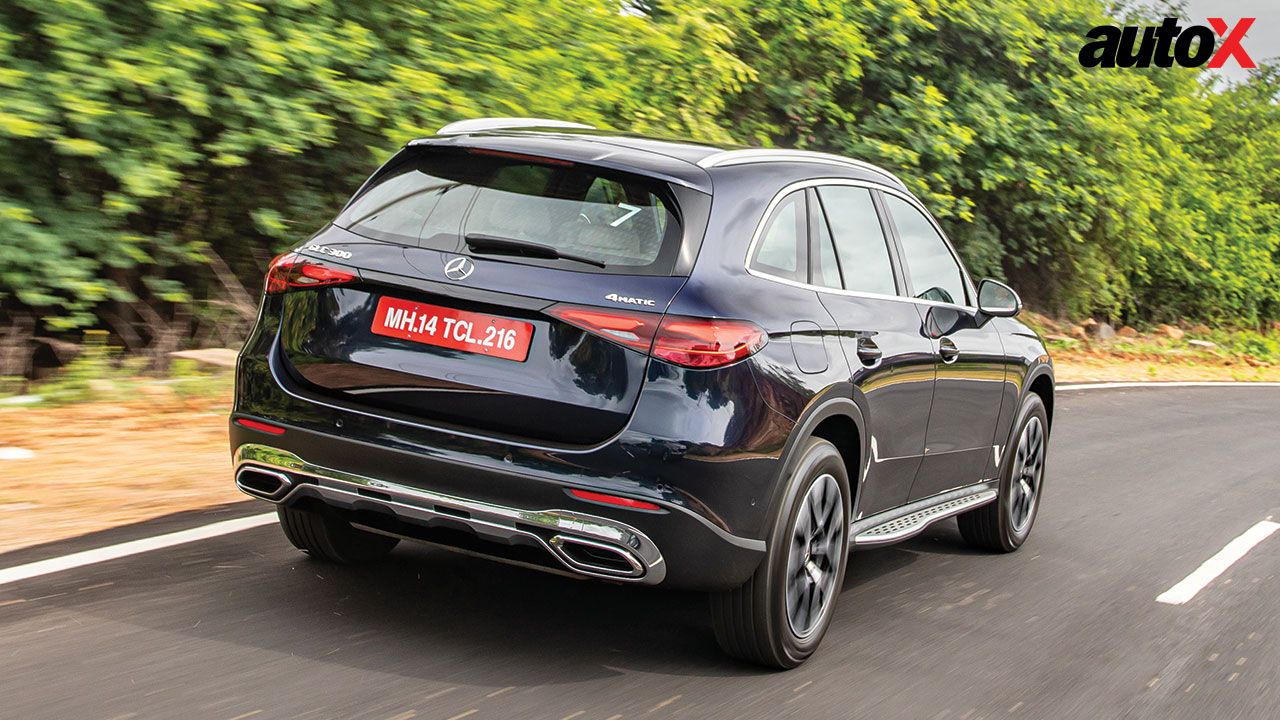
In the Indian luxury automotive segment, Mercedes has consistently been a leader in the recent past. With great products and a sizable presence in the country, the brand has made significant strides in the Indian market. One of the key contributing factors to this has been its wide line-up of SUVs that resonate with Indian customers. Among these, the GLC has stood out as a popular choice in the Indian market, and it’s not hard to see why – it strikes a perfect balance in terms of size, making it suitable for both urban traffic and highways, offers ample space, and provides an overall compelling package. So, with the second generation of the GLC, Mercedes faced the challenge of surpassing an already high benchmark. The question is – has Mercedes managed to set a new benchmark for the segment with the new GLC? We spent a couple of days with it in scenic Hampi to find out.
A quick look at the GLC is enough to tell you that it bears all the signature design elements of a Mercedes product, in line with the brand’s recent design language. It has a big front end with a large three-pointed star on top, while the sides feature a slightly bulbous appearance, a typical Mercedes design trait. Not to mention, it has a significant presence on the road. The front of the GLC features a new grille design with big headlights, and the sides have a nice shoulder line that runs through the length of the car, adding a bit of character to the profile. The glasshouse is also quite large. Overall, the car has quite an aesthetically pleasing appearance. Notably, the GLC gets large 19-inch dual-tone wheels as standard, enhancing its stance. At the rear, it features sweeping tail lights, which are reminiscent of the GLE’s tail lights – it’s another familiar design touch that highlights that it’s a Mercedes SUV. While I think that the GLC has a good presence and is likely to appeal to a broad audience, I also think that the Mercedes designers took a somewhat conservative approach in designing the car – a little more adventurous approach would have added a bit more flair to it. But, overall, its design screams Mercedes, and there is not much room for complaints.

The impression of the GLC’s design being a bit conservative takes a complete turnabout the moment you enter the vehicle – or at least, that’s what happened to me. While the exterior may be a bit boring – if I can call it that – the interior is nothing short of spectacular. Sure, it exudes the familiarity of a Mercedes interior, but the attention to detail here is simply exquisite. First up, the black and silver inlaid wood on the dash looks absolutely fantastic and has an air of opulence to it. The dashboard is covered in leather, adding to its premium appearance. Aluminium air vents are another highlight and are characterised by beautiful design, ease of use, and integrated lighting. For most people, however, the highlight of the interior will be the humongous 11.9-inch vertical touchscreen – a centrepiece that instantly grabs your attention. It also gets a digital instrument cluster, along with touchscreen controls on the steering wheel for various functions. The vehicle comes equipped with the latest version of the Mercedes UX – NTG7 – with voice command functionality and a Burmester sound system, which offers an outstanding audio experience.
In terms of space, the GLC has grown in size both in terms of length and wheelbase – the car is now over 4.7 meters in length. This expansion translates into ample space inside the car, ensuring that even people taller than six feet will find both front and rear seats quite comfortable. The panoramic sunroof and large glasshouse further add to the sense of spaciousness. The boot has also grown in size, offering 620 litres of space. My only gripe here is that almost all controls are now managed through the touchscreen, which I find to be quite distracting. And given the transmission tunnel, the middle passenger in the rear may still experience a slight compromise in legroom. Nevertheless, I would say that the GLC’s interior exudes luxury and is clearly class-leading.
Mercedes-Benz GLC Review: Boost on Demand
The GLC’s innovative approach also characterises its powertrain options, which, thankfully, include both petrol and diesel engines. On the innovation side, both engines now feature Hybrid tech, with a 48V Integrated Starter Generator (ISG) unit that offers advantages in terms of both fuel efficiency and power output. Our test car was the GLC 300 petrol version, featuring a 2.0-litre turbocharged petrol engine, which produces 255bhp and 400Nm. However, when the overboost function kicks in, the ISG system adds an additional 23bhp and 200Nm, providing enhanced outputs on demand. Of course, with so much power and torque, the GLC is an absolute breeze to drive – a gentle squeeze of the throttle is enough to put a tremendous amount of power at your disposal. In short, the GLC can maintain three-digit speeds all day long effortlessly. Also, the throttle response of the car is excellent. However, the highlight of the powertrain, in my opinion, is the 9G-Tronic gearbox. While I have experienced this unit in other Mercedes models, it was in the GLC that I found it to be in a near-perfect sync with the engine, delivering seamless shifts. Regardless of the speed or gear, this gearbox shifts almost perfectly, without any lag in the power delivery. And all this gets even better in the Sport mode.
Interestingly, both the petrol and diesel versions of the GLC will be equipped with the ISG hybrid system and feature all-wheel drive. In terms of suspension, I must say that while the GLC offers a really good ride quality, it does seem to be slightly on the stiffer side. So, you may have to exercise a bit of caution on bad roads. I think that the large 19-inch wheels also contribute to this to an extent. However, what you get in return is fantastic high-speed stability, making it suitable for long-distance cruising. If I were to talk about things that could have been better, I would say that the steering could do with a bit of feel and that it gets simply too heavy in the Sport mode, making it feel cumbersome.
Also Read: Mercedes-Benz GLE Facelift Launched in India, Price Starts at Rs 96.40 Lakh
Interestingly, the GLC also features a dedicated Off-Road mode – I don’t know if anyone would want to take their GLC off-road, but well, it does have the capability. When switched to this mode, the large multimedia display offers you a host of information about your steering angle, tyre pressures, and compass location to help in navigating rough terrain. An interesting feature of the GLC is that you can use the 360-degree camera to get what Mercedes calls a Transparent Bonnet – it basically means that at low speeds in the Off-road mode, you get a view of what’s under the bonnet for better navigation of the terrain – it’s quite a cool feature, to be honest.
Mercedes-Benz GLC Review: A New Benchmark
Overall, the new GLC offers quite a compelling package in the mid-size luxury segment. Its increased size strikes quite a balance between spaciousness and manoeuvrability on our roads. The interior is an absolute delight and, perhaps, class-leading, given its opulence and outstanding fit-and-finish. It also offers an enjoyable driving experience, which is well complemented by its hybrid system and impressive gearbox.
Also Read: ADAS Comparison, Honda City vs Mahindra XUV700 vs Hyundai Ioniq 5 vs Mercedes-AMG EQS
Apart from the fact that its exterior is a bit conservatively designed, I really can’t find much fault with this car. In fact, it might just be the best offering in its segment. There, I said it! The GLC, right from its launch, already seems to be a winner.
- Mercedes-Benz GLC 300
Engine: 1,999cc / 4-Cylinder / Turbocharged
Fuel: Petrol
Transmission: 9-Speed aT / all-Wheel-Drive
Power: 255bhp @ 5,800 rpm
Torque: 400Nm @ 2,000 – 3,200rpm
Price: ₹73.50 Lakh (Ex-Showroom)
X-Factor: With its interior, space & the Mercedes badge, the GLC has the makings of a segment leader.
| Pros • Great to drive | Cons |


























Write your Comment